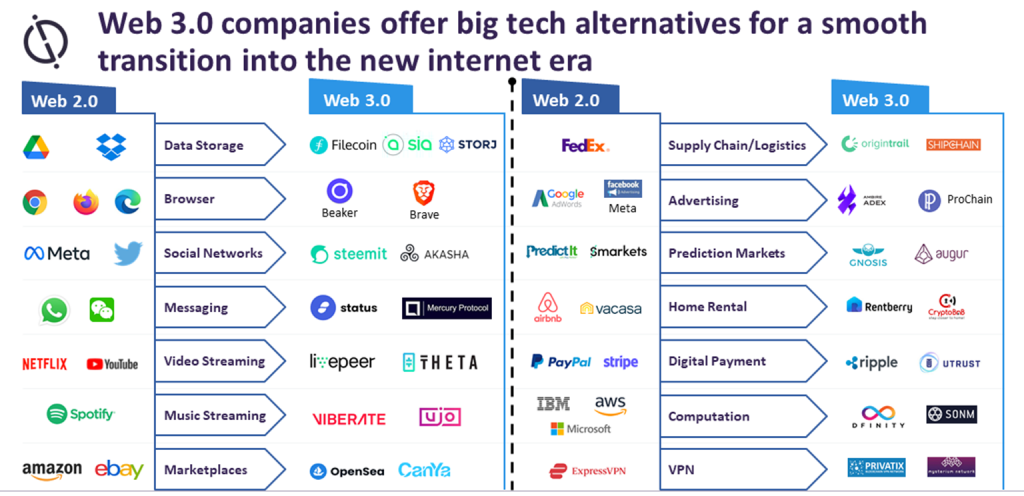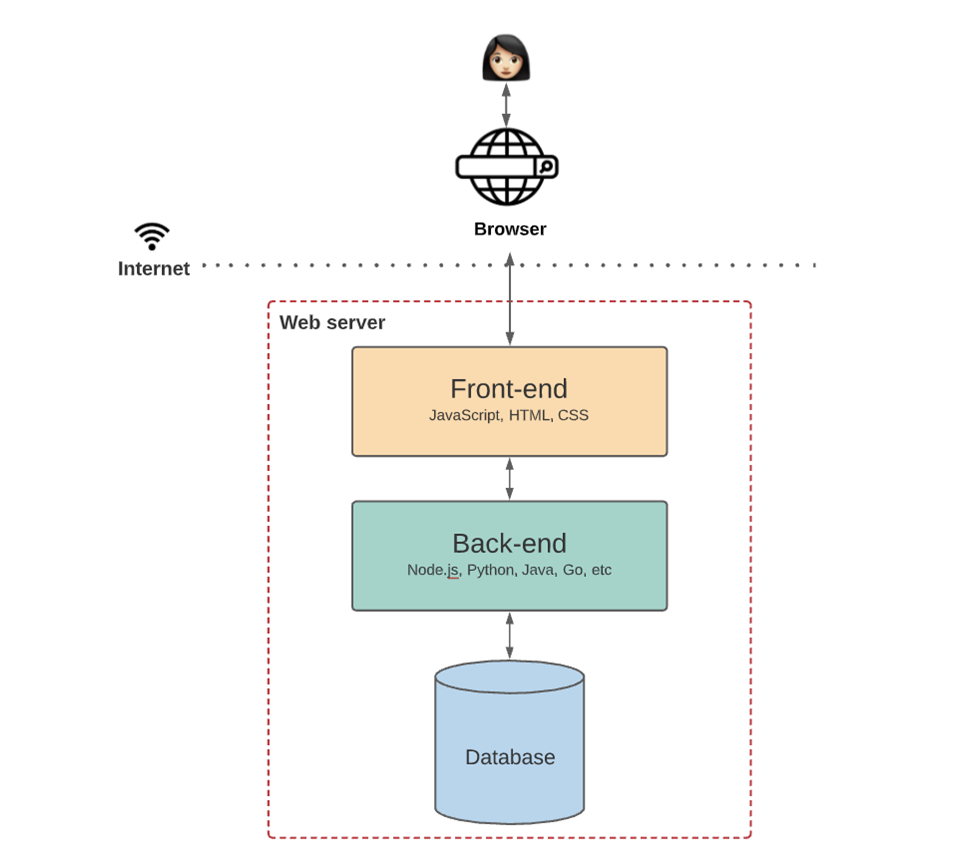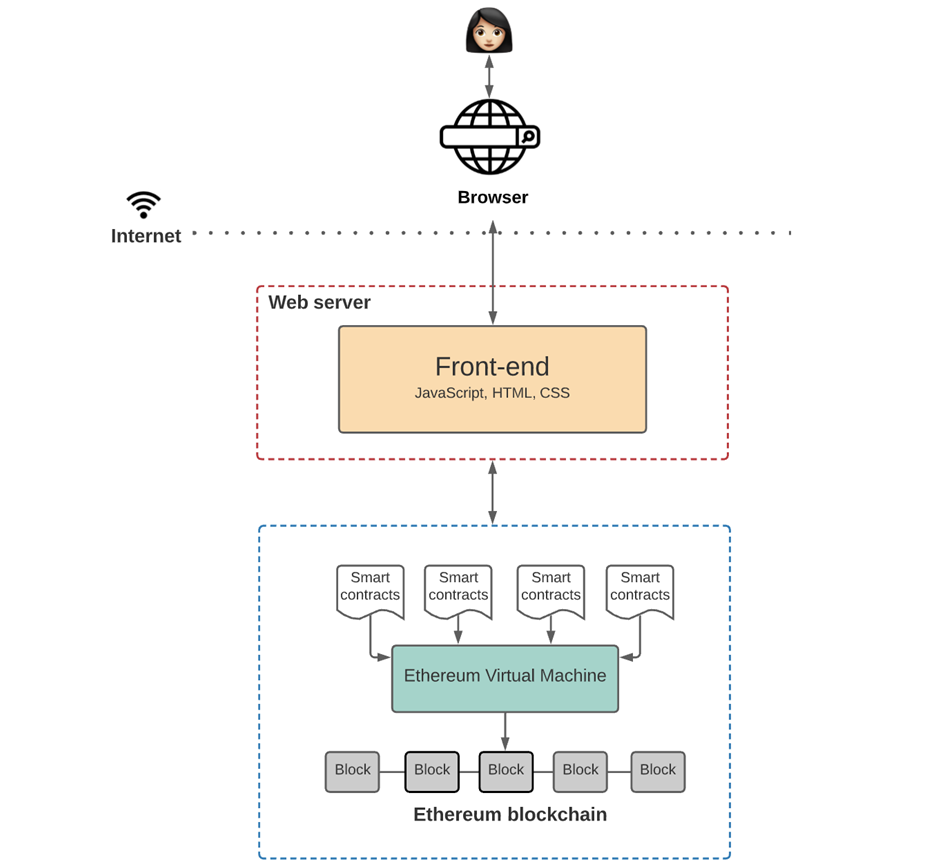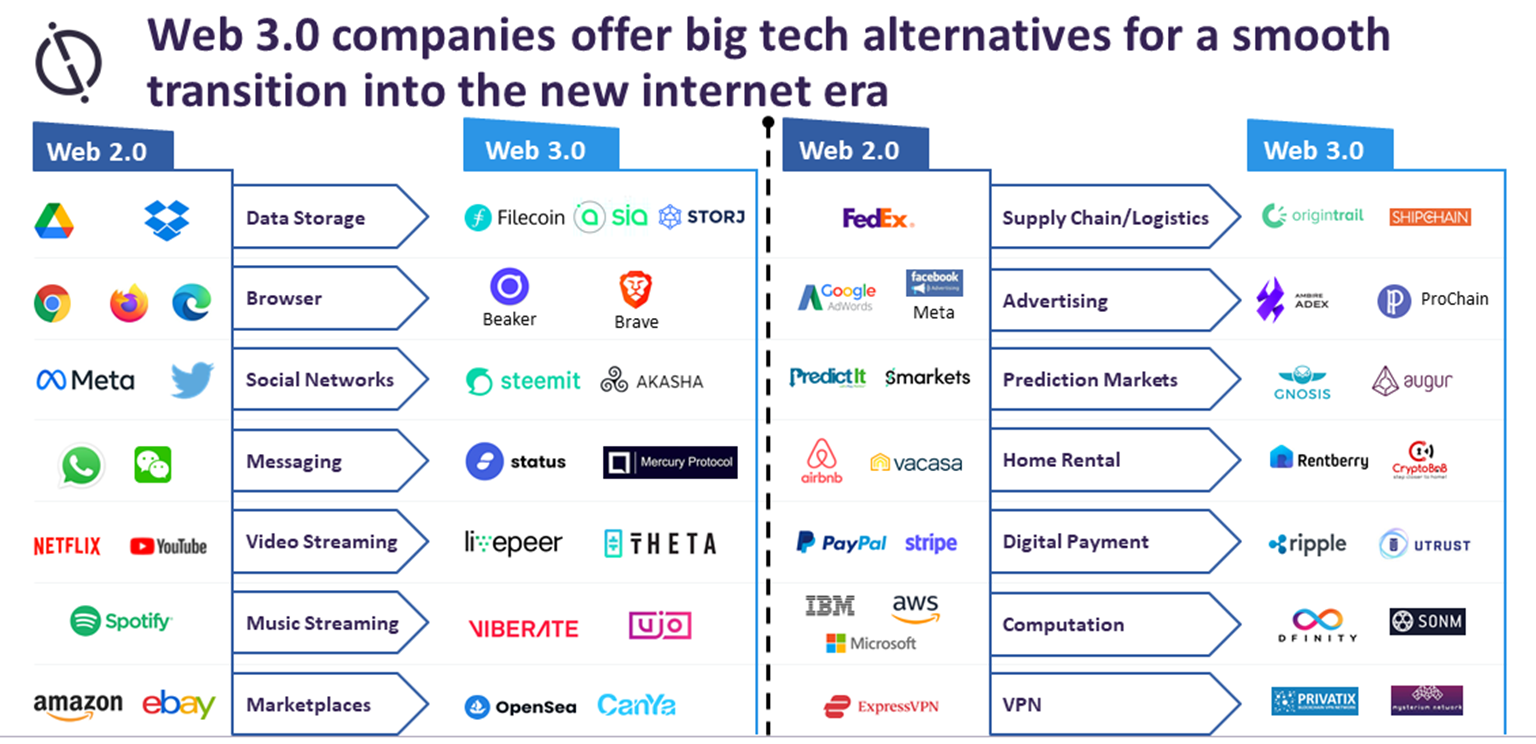HOW TO DEVELOP A WEB3 WEBSITE AND MOBILE APPLICATION?
WEB3 applications are pieces of software that use one of the WEB3 technologies, i.e., blockchain for decentralization, artificial intelligence, neural learning, Big Data, VR/AR, dimensional interfaces, and distributed computing.
What is a WEB3 application?
WEB3 (Web 3.0) is a general term for various technologies that will significantly change the internet in the following ten years. It is expected that the WEB3 Internet applications will be decentralized and will use virtual and augmented reality. Also, it will understand the communication on the internet. In other words, 2D websites and texts will become three-dimensional, the search engines will give more relevant results, and the Internet users will have the power instead of the national corporations.

Examples of WEB3 applications that might replace popular modern WEB2 services. Source.
How does a WEB3 application function?
WEB3 application architecture is significantly different from WEB2 applications. For example, Medium is a website that allows sharing content or interacting (liking, sharing, commenting) with other users’ content. As a WEB2 application, Medium might seem to be a straightforward resource, yet the architecture involves many technologies:
- Firstly, it requires storage for posts, users’ data, comments, likes, tags, etc. For this purpose, a constantly updating database is necessary, i.e., a local server or a cloud.
- Secondly, the inner code written in Python, C#, Node.js, PHP, or Java must define the website’s business logic. For instance, it should understand what happens when a new user registers an account and publishes a post, likes, or comments on something.
- Thirdly, the external code written in CSS, JQuery, HTML, TypeScript, React, or JavaScript must understand the logic of the user interface. For example, it must define how the user sees the website and what happens when they interact with each element on the page.
Having all this information, you will have a picture of how a WEB2 application functions. In our case, you see how Medium functions when you write or publish posts and comments.

An example of WEB2 application architecture. Source.
It is a centralized type of architecture since the code is stored on an internal server, and data is in a database. Both the code and data are partially owned and controlled by the creator (owner) of the application, which causes issues with the security and privacy of data and the income received from it.
Unlike WEB2 applications like Medium, Facebook, Microsoft Word, WhatsApp, Netflix, or PayPal, WEB3 applications do not have a centralized server or a centralized database that stores information about the users and application. Instead, the technology employs a blockchain for crowdsourcing the public server, which the P2P anonymous nodes support (anonymous internet users).
Furthermore, blockchain technology allows employing smart contracts for inner business logic automatization.

BTS does professional development of WEB3 mobile app development. If you have questions, contact us for a free consultation.







